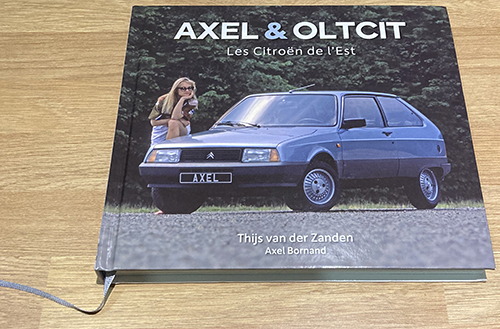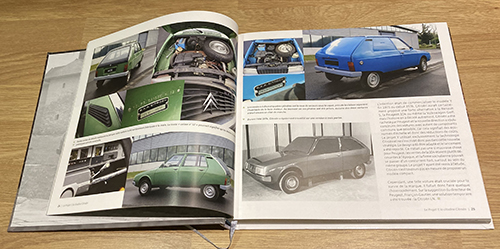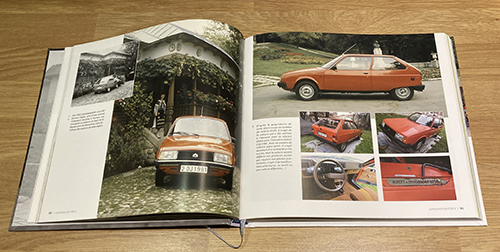|
||||||||||||||||||||||
|
 |
||||||||||||||||||||||
|
Author and owner of Citrovisie Thijs
van der Zanden has avoided the commonly trod route of
writing about the iconic DS, Traction, 2CV, etc. and
instead has tended to explore those models that have
been largely ignored by mainstream writers. This is not the first time Thijs has
looked at this car – previous publications are Citroën
Axel, la cousine de Craiova which despite
its French title is actually in Dutch; Kleintjes
in Crisistijd which covers the LN, LNA Visa
and C15 in addition to the Axel and Oltcit and is also
in Dutch; and the two Dutch publications Citroensap
1 and Reserveblik. Such is the wealth of
new material that Thijs has managed to uncover since
the first book was published in 2010 that the
subject has warranted new editions. Possibly one of the least known
models is the Axel/Oltcit. And while it may not be as
iconic as its better-known stablemates, its story is
fascinating – and as was often the case with Citroën it
is a tale of missed opportunities, financial
mismanagement, bad judgment and in this case, to cap it
all, political intrigue and industrial espionage. The Oltcit was built in Romania and
was sold and badged as the Citroën Axel in Western
European (and some other) countries. The Axel was never
sold here in the UK – which was quite probably a
blessing given that they were an absolute disaster for
the company with brand new cars breaking down, oil
leaks, and when they were working, they suffered from
excessive fuel consumption. |
|||||||||||||||||||||||
 |
 |
||||||||||||||||||||||
|
While to the casual eye, it looks
like a three-door Visa is utterly unlike that car but
could be regarded as a cousin (hence the title of the
original book). The energy crisis of 1974 had led to
a drop in new car sales and Citroën, in common with
other motor manufacturers, decided to investigate new
markets. Ceausescu’s political independence from the
Soviet Union and his protests against the Soviet
invasion of Czechoslovakia in 1968 attracted the
interest of Western powers, who believed him to be an
anti-Soviet maverick, and they hoped to create a schism
in the Warsaw Pact by funding him. In theory, building a car there would
give Citroën access to Comecon markets without the
swingeing import taxes imposed on imports from outside
the economic bloc. Further perceived advantages were the
low labour rates in the country and Georges Taylor’s
personal connections with senior officials in the
Ceausescu government. In practice things did not pan out
the way they hoped. The Oltcit and Axel are the very last
models from the Michelin era: the last designs without
any influence from Peugeot. The Oltcit and Axel have a
lengthy development history which Thijs explains in
detail, accompanied by many hitherto unseen pictures. This book has been translated into
French by the appropriately named Axel Bornand and is a
must-buy if you read French. © 2022 Julian Marsh |
|||||||||||||||||||||||
| Citrovisie
was founded by Thijs van der Zanden, who combines his
passion for writing and Citroëns. Citrovisie publishes books which will interest the enthusiasts of the Citroën brand. The formula is simple: no basic books with well-known facts and standard photographs, but books full of new information and unseen images. Besides the heap of information a Citrovisie book offers, it's also a lot of fun browsing through the chapters, since there are many images in the books many of which have never been published before. |
|||||||||||||||||||||||
|
To purchase, visit Citrovisie |
|||||||||||||||||||||||
|
© 2013 Julian Marsh |
|||||||||||||||||||||||


